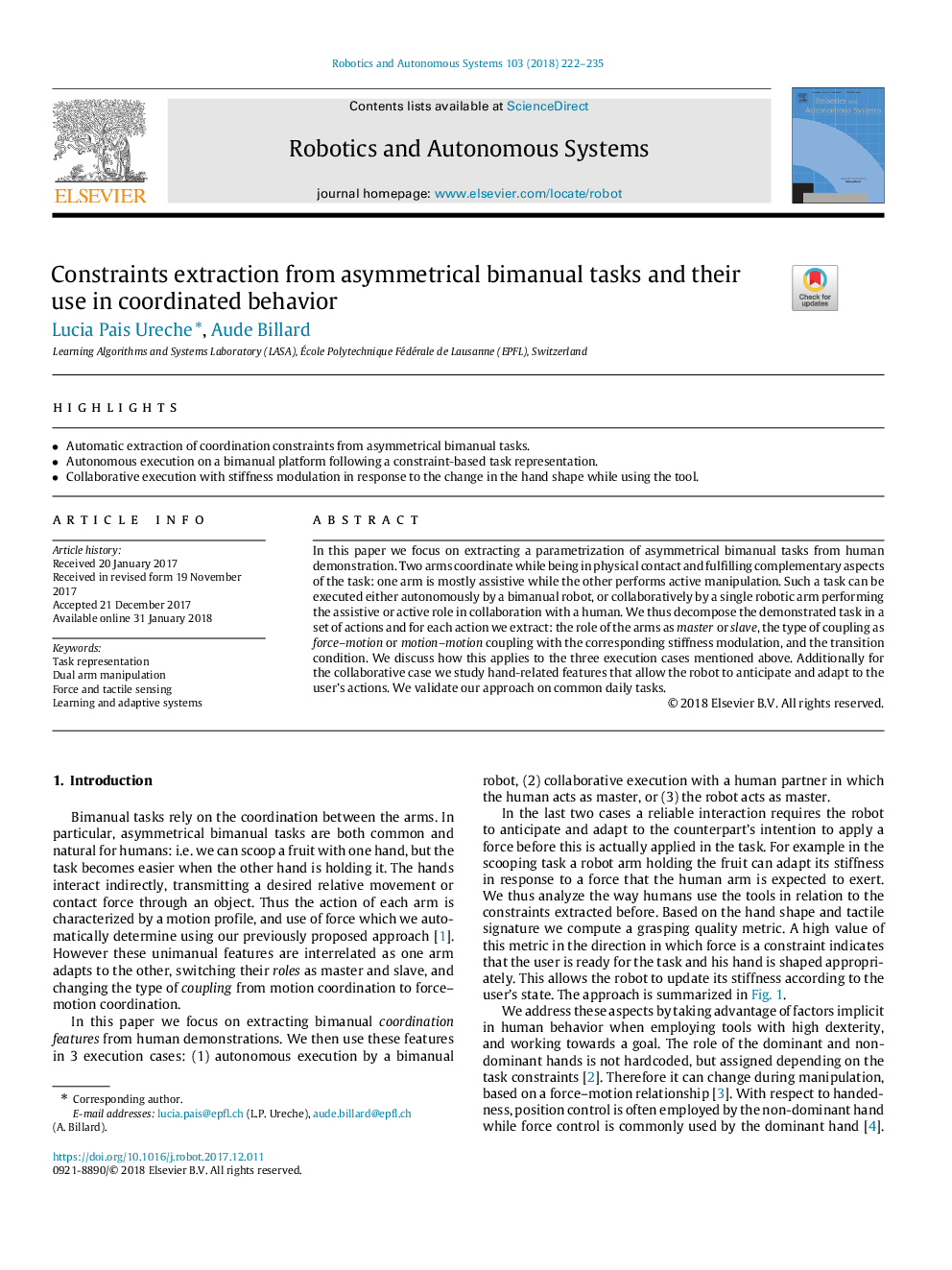| Article ID | Journal | Published Year | Pages | File Type |
|---|---|---|---|---|
| 6867229 | Robotics and Autonomous Systems | 2018 | 14 Pages |
Abstract
In this paper we focus on extracting a parametrization of asymmetrical bimanual tasks from human demonstration. Two arms coordinate while being in physical contact and fulfilling complementary aspects of the task: one arm is mostly assistive while the other performs active manipulation. Such a task can be executed either autonomously by a bimanual robot, or collaboratively by a single robotic arm performing the assistive or active role in collaboration with a human. We thus decompose the demonstrated task in a set of actions and for each action we extract: the role of the arms as master or slave, the type of coupling as force-motion or motion-motion coupling with the corresponding stiffness modulation, and the transition condition. We discuss how this applies to the three execution cases mentioned above. Additionally for the collaborative case we study hand-related features that allow the robot to anticipate and adapt to the user's actions. We validate our approach on common daily tasks.
Related Topics
Physical Sciences and Engineering
Computer Science
Artificial Intelligence
Authors
Lucia Pais Ureche, Aude Billard,
